20th July 2019 marks 50 years since Neil Armstrong took those historic steps that marked the pinnacle of human achievement to date. The Apollo 11 mission and those which followed demonstrated what humans could accomplish with sheer curiosity and determination.
The Apollo missions collected and returned approximately 380 kg of lunar rocks to Earth [1] where they are curated by NASA and allocated to approved scientific research projects. Over the past 50 years, the Apollo lunar samples have been studied in laboratories around the world using modern analytical techniques. From these studies, it emerged that lunar geology could be described in terms of two major rocks types: the anorthosites (named after rocks rich in a calcium-rich mineral called anorthite) that constitute the lighter areas (called Highlands) on the Moon’s surface as viewed in the night sky; and the mare basalts (named after rocks formed mainly of iron-rich minerals, which form through quick cooling of a lava) that represent the darker patches dotted across the Moon’s surface, originally named after the Latin ‘mare’ meaning ‘sea’.
Watch the video below as Tara Hayden discusses the structure of the Moon.
Transcript
Mini lecture
Living on the Moon
Tara Hayden:
50 years ago, the Apollo 11 mission landed on the moon and this mission and the missions that followed it returned samples to earth that we then studied to understand the moon's makeup and also the volatiles present in it. Volatiles are elements such as carbon-nitrogen water that is essential for life and these very early studies found that there was barely any volatiles present on the moon and that it was a born dry planetary body.
However, in 2008, Saal et al published a paper looking at green glass which is produced in firefight interruptions to the moon surface and they found significant quantities of volatiles present.
This led to a reanalysis of all the polar samples found a few tens of ppm to a few hundreds of ppm of water especially present in lunar rocks and this water is primordial water thought to be have been introduced very early in the moon's history. In the 1990s the lunar prospector and Clementine orbiters detected water ice in permanently shadowed craters at the lunar poles this water ice could be used as a resource in future lunar missions that we would use to fuel the rockets or to reduce our payload going back and forth to the moon.
However, we need to have a way to extract this water from the water ice and at the Open University we are producing equipment that we can use to extract this water, and this may eventually lead to extended lunar habitation.
-End of Mini lecture-
While investigating the Moon’s geology, scientists also looked for the presence of indigenous volatile elements in lunar samples. Volatile elements, such as carbon, nitrogen and water, are essential for life on Earth. In the interest of discovering if the Moon was ever habitable, quantifying its volatile element contents was of major importance. However, in the decades following the Apollo missions, scientists found little evidence of volatiles in the lunar samples.
Future missions to the Moon’s poles are aimed at testing whether water ice is indeed present, as this could be a valuable resource. If we can extract water while on the Moon, this will reduce the payload that the crew must take on the outbound journey.
However, this all changed only a decade ago. In 2008, Saal et al.[2] published a paper reporting significant quantities of water in volcanic green glass beads that are formed when lava erupts energetically on to the Moon’s surface in fire fountain eruptions. This created a paradigm shift in lunar science and prompted the re-analysis of the Apollo collections using newer techniques. This led to the discoveries of substantial quantities of water in a variety of rock types, ranging from a few tens of ppm (parts per million) to up to several hundred ppm. This means that the interior of the Moon, could have significant quantities of water.
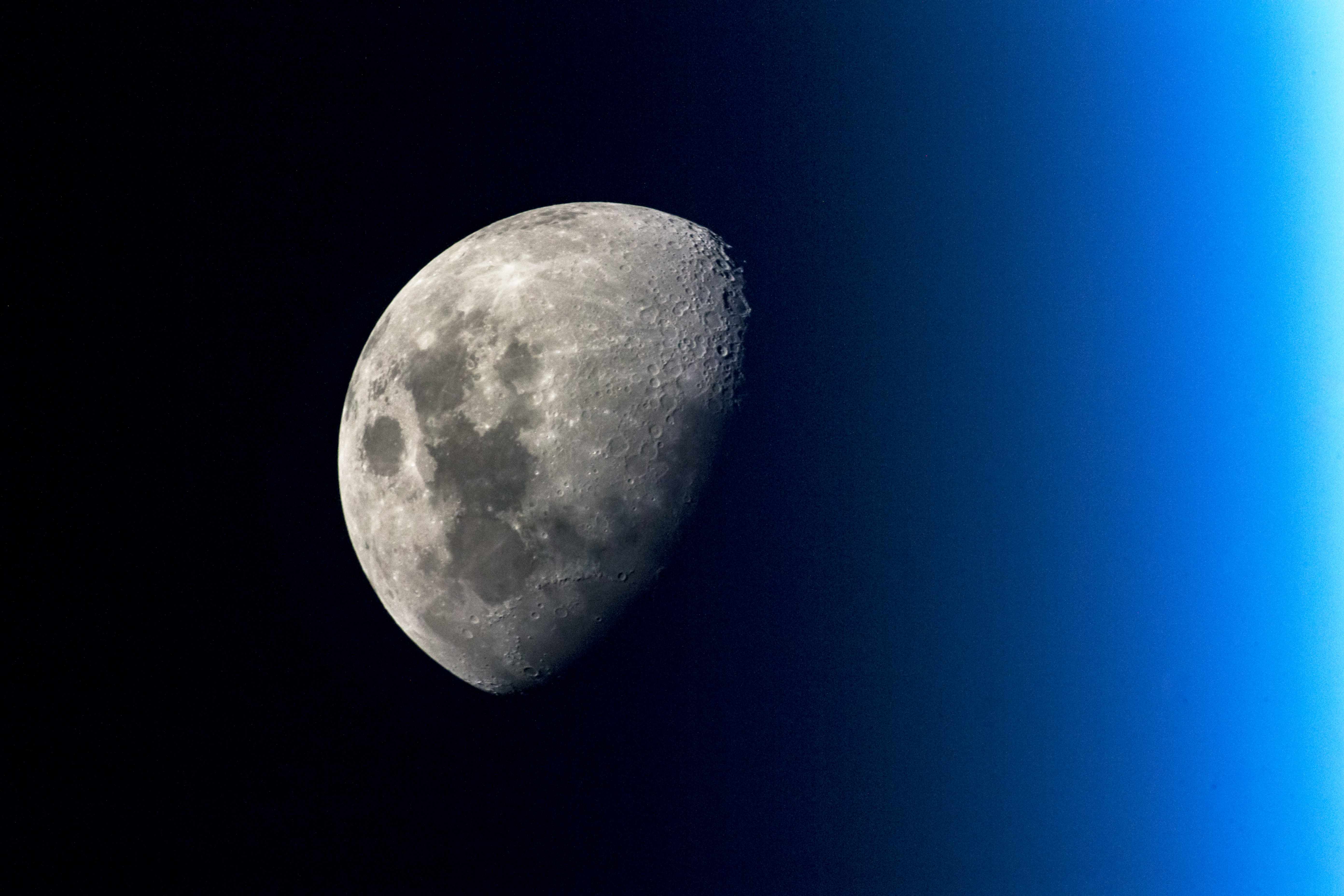 Lunar agenda, taken by ESA astronaut Alexander Gerst from the International Space Station.
Lunar agenda, taken by ESA astronaut Alexander Gerst from the International Space Station.
Prior to Saal et al.’s discovery, lunar orbiters were detecting signs of water ice at the Moon’s poles, in craters that are permanently in shadow [3]. Future missions to the Moon’s poles are aimed at testing whether water ice is indeed present, as this could be a valuable resource. If we can extract water while on the Moon, this will reduce the payload that the crew must take on the outbound journey.
In order to extract water on the Moon, however, we will need technology capable of doing so. Indeed, there is ongoing research to produce such an instrument. It is anticipated that the next decade will witness a successful application of this technology which can be replicated for future crewed missions and perhaps even for developing a future Moon base.
From 1-7th July 2019, the Open University joins four other institutions to showcase an exhibit entitled ‘Living on the Moon’ at the Royal Society Summer Science Exhibition in London. We will be providing the public with the chance to see, touch and feel Moon rocks, learn about the ongoing scientific research about the Moon, and experience what it would be like to live on the Moon. We look forward to meeting lunar enthusiasts and discussing the exciting future of lunar science!
REFERENCES
[1] Williams, D. R. 2013. The Apollo Program (1963 – 1972) https://nssdc.gsfc.nasa.gov/planetary/lunar/apollo.html
[2] Saal, A.E., Hauri, E.H., Cascio, M.L., Van Orman, J.A., Rutherford, M.C. and Cooper, R.F., 2008. Volatile content of lunar volcanic glasses and the presence of water in the Moon’s interior. Nature, 454(7201), p.192.
[3] Feldman, W.C., Maurice, S., Binder, A.B., Barraclough, B.L., Elphic, R.C. and Lawrence, D.J. 1998. Fluxes of fast and epithermal neutrons from Lunar Prospector: Evidence for water ice at the lunar poles. Science, 281(5382), pp.1496-1500.
[4] The main image on this page is from the European Space Agency, 2013. Lunar base made with 3D Printing http://www.esa.int/spaceinimages/Images/2013/01/Lunar_base_made_with_3D_printing
Discover more about the Moon
-
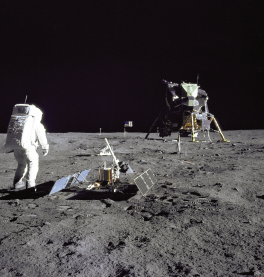
Apollo 11 and 50 years of research on Moon rocks
Read now to access more details of Apollo 11 and 50 years of research on Moon rocksThe first Moon landing is arguably the most important event for humankind. Dr Mahesh Anand and Dr Andrew G Tindle, shed light on the work which has taken place with the Moon rocks taken from that mission.
Article
Level: 1 Introductory
-
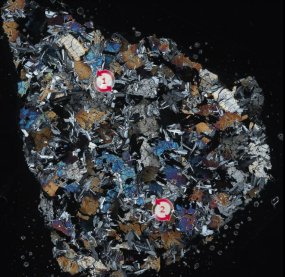
Explore Moon rocks collected from the first Moon landing
Take part now to access more details of Explore Moon rocks collected from the first Moon landingUse our Virtual Microscope to examine a selection of Moon rocks collected by Neil Armstrong and Buzz Aldrin, from the Apollo 11 mission in 1969.
Activity
Level: 1 Introductory
Study a free course on the Moon
-
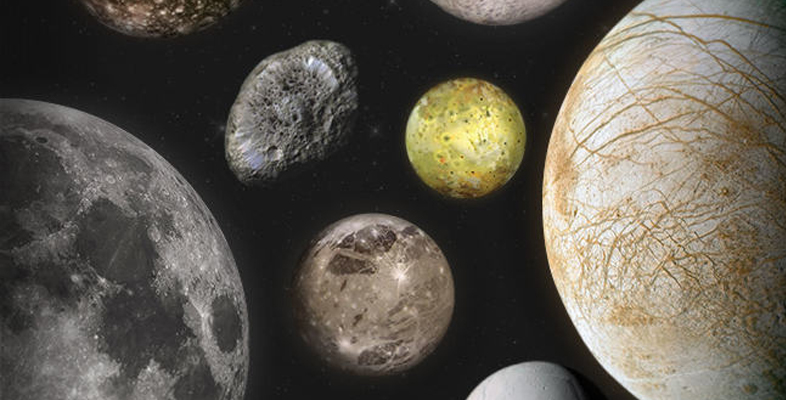
Moons of our Solar System
Learn more to access more details of Moons of our Solar SystemIn this free course, Moons of our Solar System, explore the many moons of our Solar System. Find out what makes them special. Should we send humans to our Moon again?
-
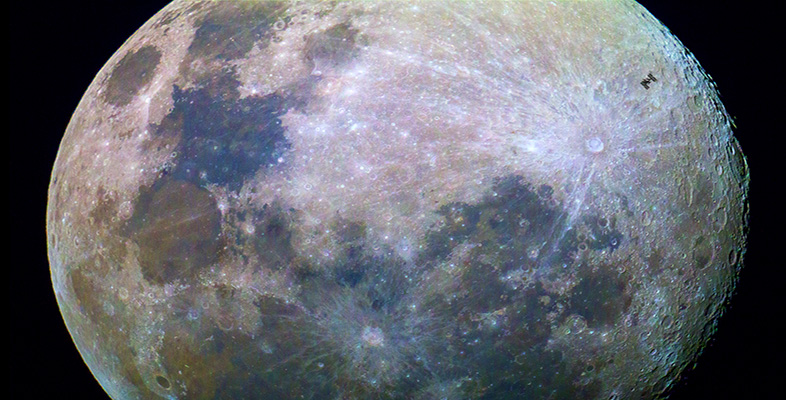
The Moon
Learn more to access more details of The MoonAs the only planetary body everyone is familiar with seeing in the sky, the Moon has long been an object of fascination and speculation. This free course will teach you about the nearest planetary body to Earth: the missions to the Moon, the basic facts of its composition, the cratering on its surface, and the ancient eruptions that flooded many...
-
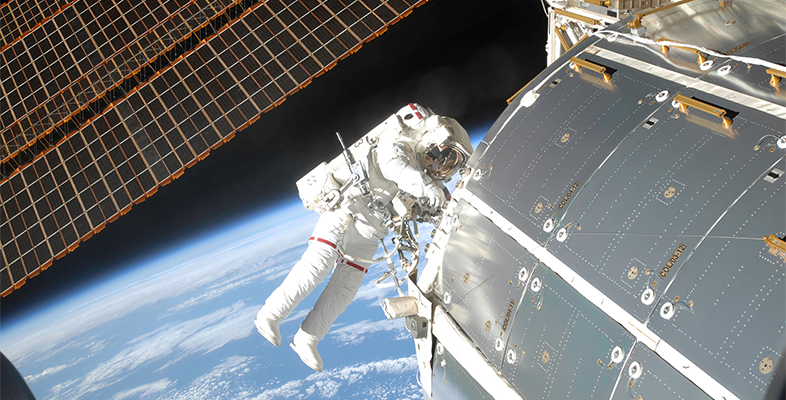
Microgravity: living on the International Space Station
Learn more to access more details of Microgravity: living on the International Space StationThis free badged open course, Microgravity: living on the International Space Station, will help you to consider microgravity environments in more detail than before! You will make direct comparisons of some important physical values between the International Space Station (ISS), the Earth and the Moon.
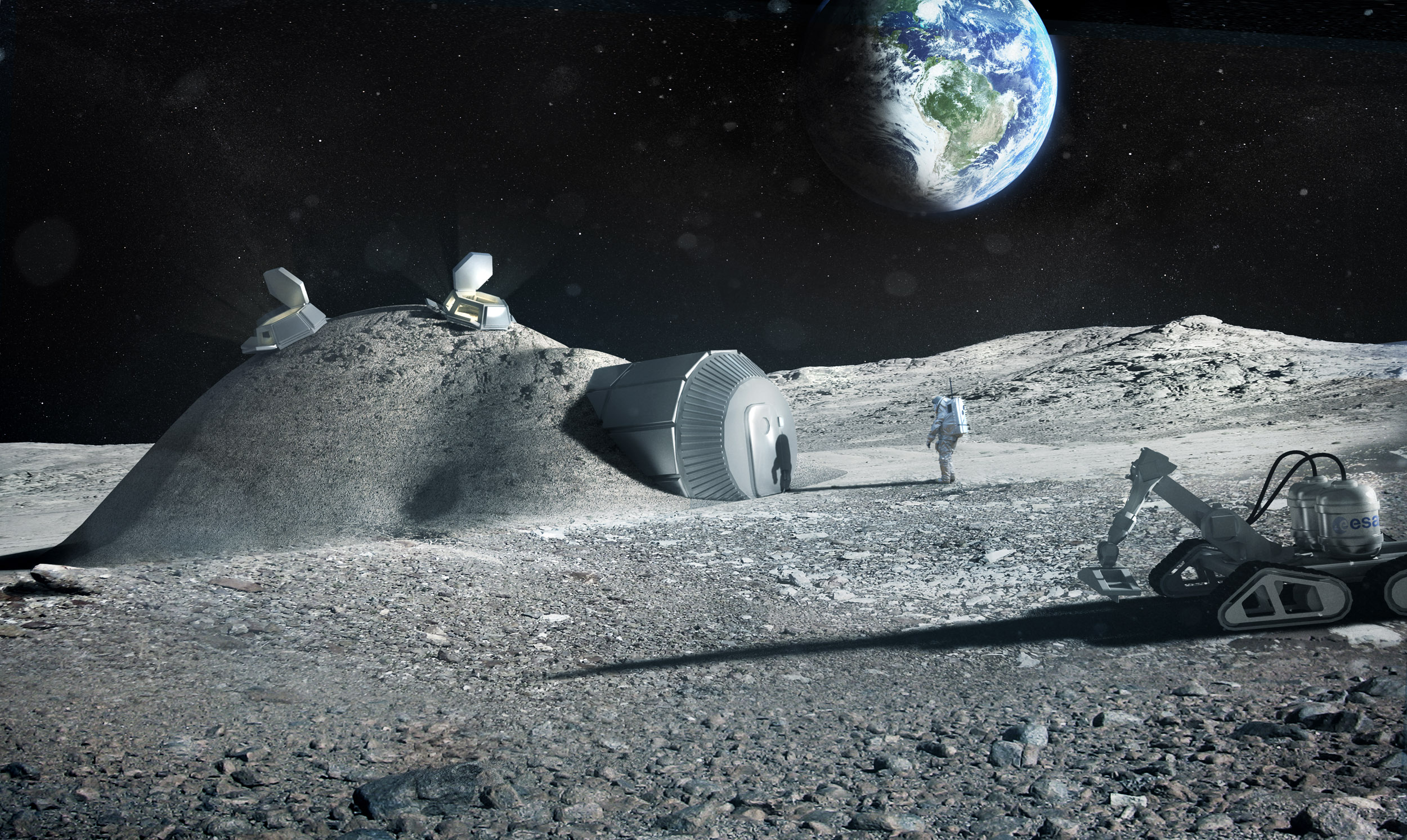
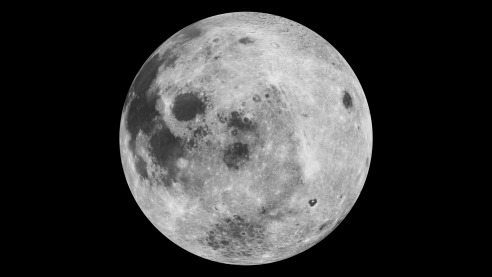
Rate and Review
Rate this article
Review this article
Log into OpenLearn to leave reviews and join in the conversation.
Article reviews